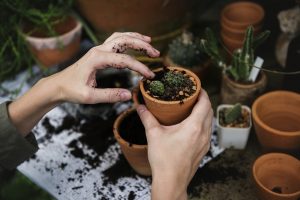
Plants in your home can provide many benefits – they purify the air, add visual interest, and even improve your mood. But growing healthy plants can be challenging for many rooms in your home, especially ones without a lot of natural light from windows.
Never fear! Many varieties of houseplants thrive in low-light conditions. I’ve compiled this list of the 20 best indoor plants for dark rooms to help you pick the perfect plants to green up those darker spaces in your home.
What Makes a Good Low Light Plant?
Before getting into the specific plant varieties, it helps to understand what makes certain houseplants able to tolerate and flourish in low-light environments.
Here are a few key factors:
- Slow growth rate – Plants that grow slowly generally require less light. Quick-growing varieties will become leggy and limp in darker conditions.
- Large leaves – Plants with broad leaves can absorb more light than smaller-leaved varieties.
- Color leaves – Varieties with leaves in lighter shades of green, gray, or white reflect more light around the leaves, making the most of lower light.
- Native habitat – Plants native to shaded forest floors or other low-light environments have adapted to thrive with minimal light.
You can create a lush indoor garden in the darkest corners of your home by choosing plants that naturally possess these traits.
The Top 20 Best Indoor Plants for Dark Rooms
Based on their ability to tolerate and flourish in low-light conditions.
Here are my top recommendations for the best indoor plants for dark rooms:
1. Snake Plant (Sansevieria)
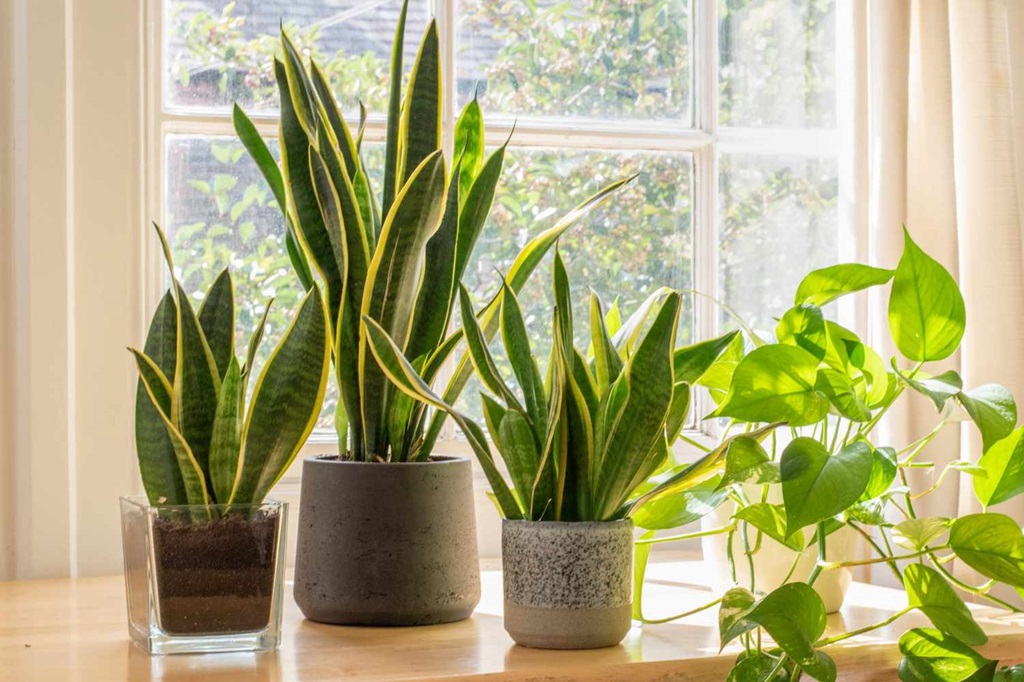
With its upright, sword-shaped leaves, the snake plant, also sometimes called mother-in-law’s tongue, is a classic houseplant that easily handles low light conditions. Native to tropical Africa, these plants will tolerate almost any indoor environment. Just don’t overwater – their succulent-like leaves store water and can quickly rot if the soil stays too wet.
2. Cast Iron Plant (Aspidistra)
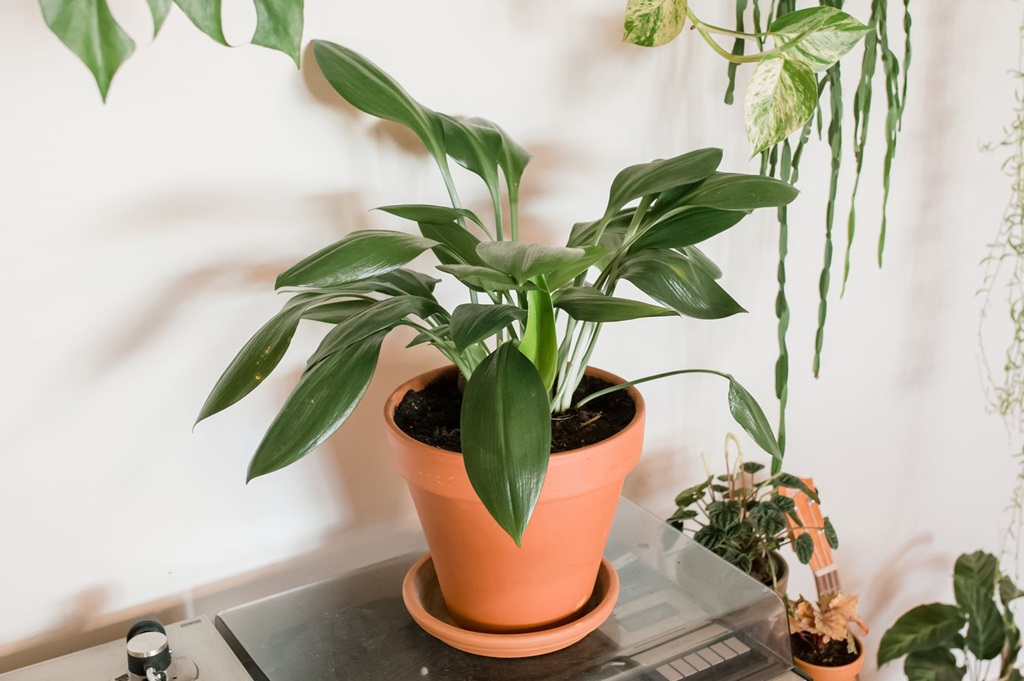
As its common name suggests, the cast iron plant is practically indestructible and adaptable to almost any condition, including very dark corners. Its broad, strappy leaves emerge from the soil in a fountain-like clump. Native to China and Japan, cast iron plants thrive on neglect, and their dark green foliage will help brighten up dimly lit rooms.
3. Peace Lily (Spathiphyllum)
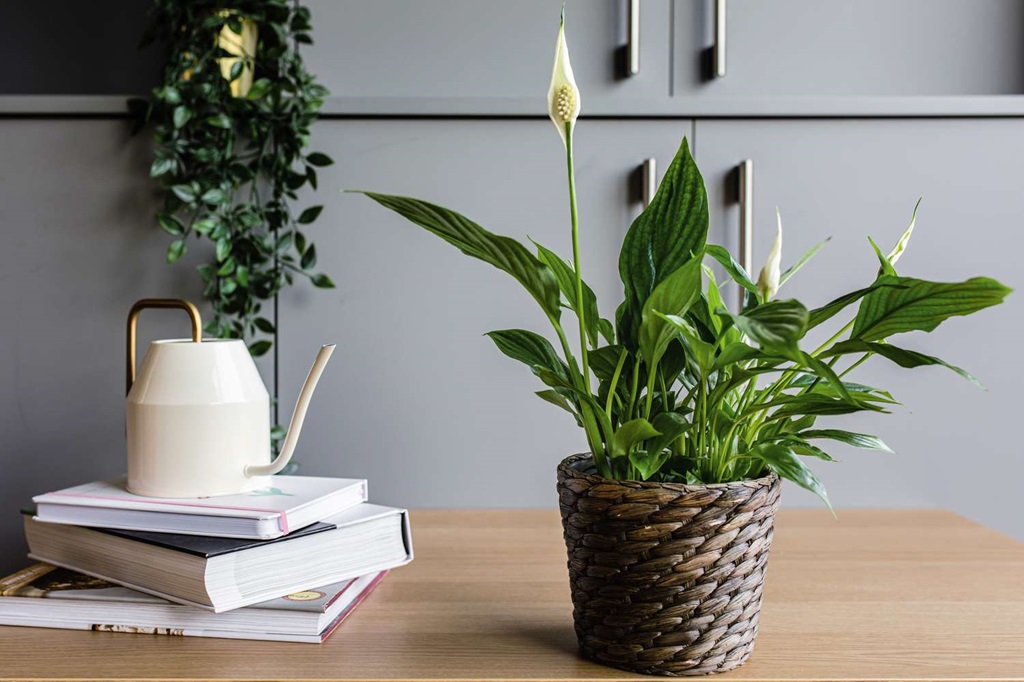
With its lush dark green leaves and graceful white blooms, the peace lily brings a touch of tropical flair indoors. It requires very little light; direct sun will scorch its leaves, making it an ideal choice for rooms with minimal natural light. Let the soil dry out between waterings and mist the leaves occasionally to keep this beauty thriving.
4. Chinese Evergreen (Aglaonema)
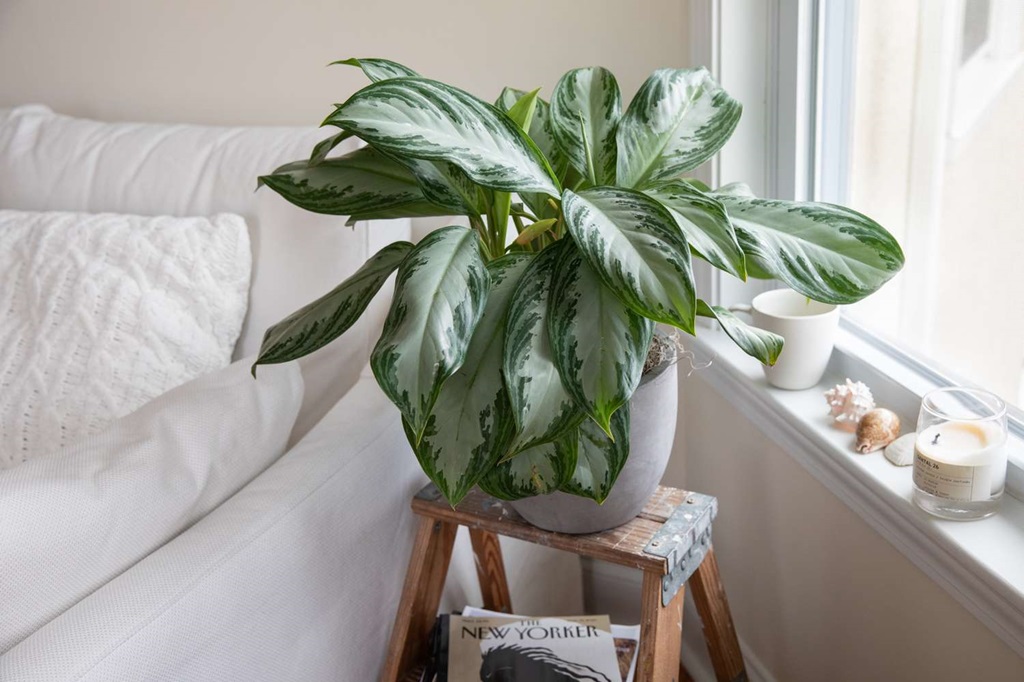
Chinese evergreen is an excellent choice to add color and pattern to darker rooms. Its leaves range from solid dark green to variegated silver, white, pink, and red patterns. Slow-growing and low maintenance, these plants tolerate neglect but thrive with a bit of attention. Just take care, not overwater.
5. ZZ Plant (Zamioculcas zamiifolia)
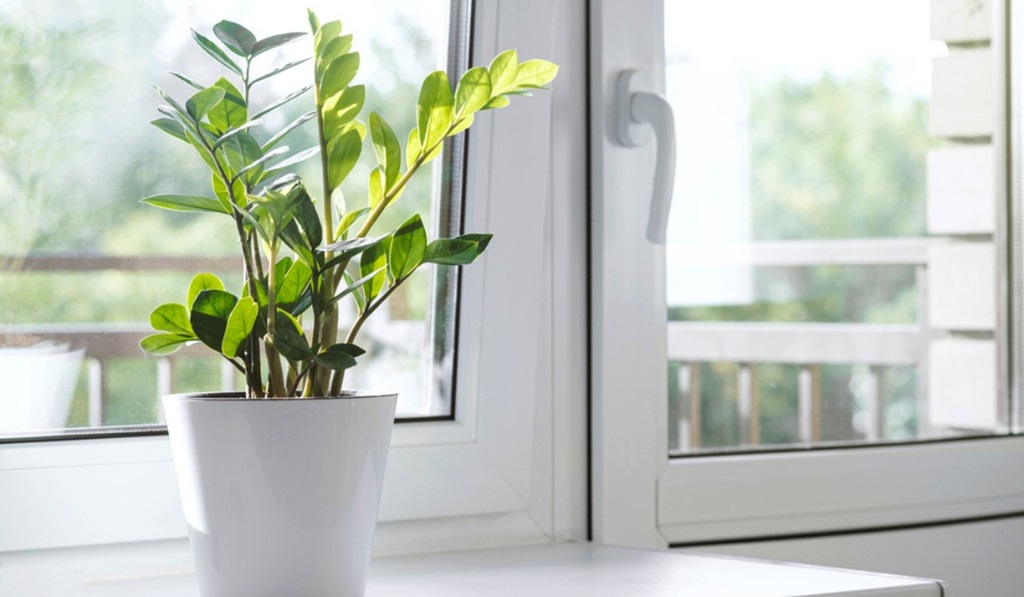
The ZZ is bulletproof for indoor plant care, sometimes called the eternity plant. Hailing from Africa, its succulent stems and waxy, oval-shaped leaves store water, allowing ZZ plants to survive for weeks without watering. He prefers partial shade and tolerates very dim corners remarkably well.
6. Pothos (Epipremnum aureum)
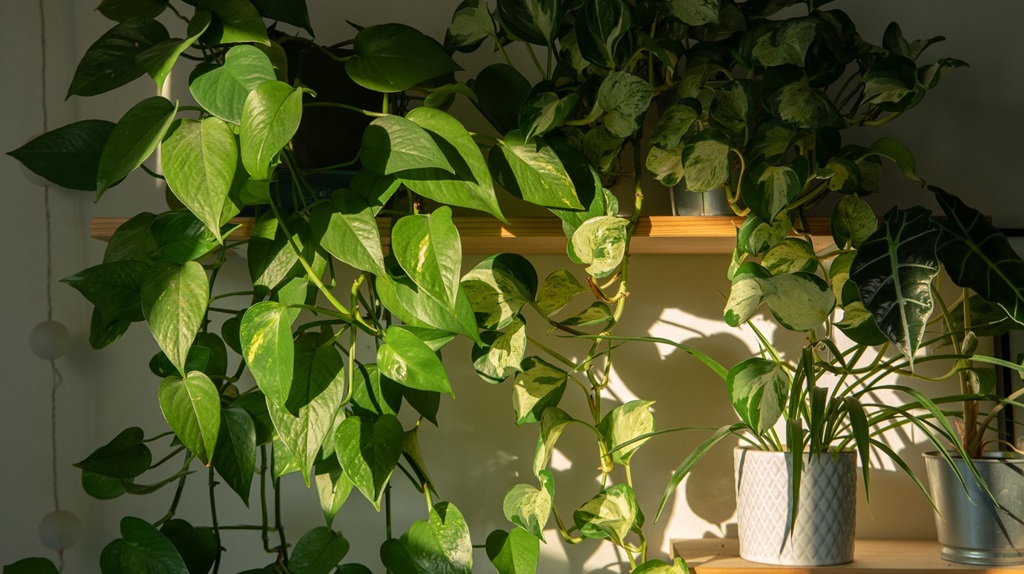
With its vining growth habit and heart-shaped leaves, pothos is one of the most popular houseplants for good reason – it grows almost anywhere! Pothos will readily tolerate low light conditions indoors. Let it trail from a hanging basket or train; it stems up a moss pole. Choose from green or variegated varieties.
7. Parlor Palm (Chamaedorea elegans)

These compact palms have feathery, arching fronds emerging from thin single stems. Slowly growing to around 4-6 feet tall indoors, parlor palms make excellent low-maintenance plants for dimmer rooms. Let the soil dry out between watering and occasionally mist the fronds for added humidity. Remove any yellowing lower leaves as needed.
8. Dracaena (Dracaena)
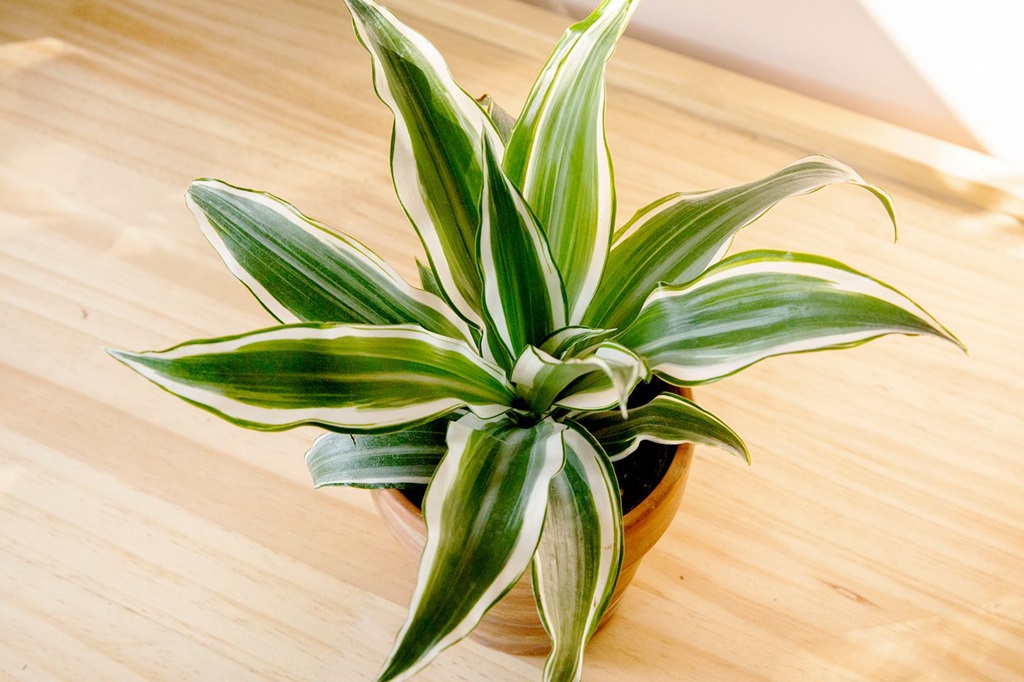
Embracing a massive group of varieties, dracaena houseplants come in all shapes, sizes, and leaf colors. But most share a standard tolerance for low light situations, making them highly versatile indoor plants. Many dracaena are narrow and upright, perfect for tucking into corners or filling limited spaces. Water when the soil dries out.
9. Corn Plant (Dracaena fragrans)
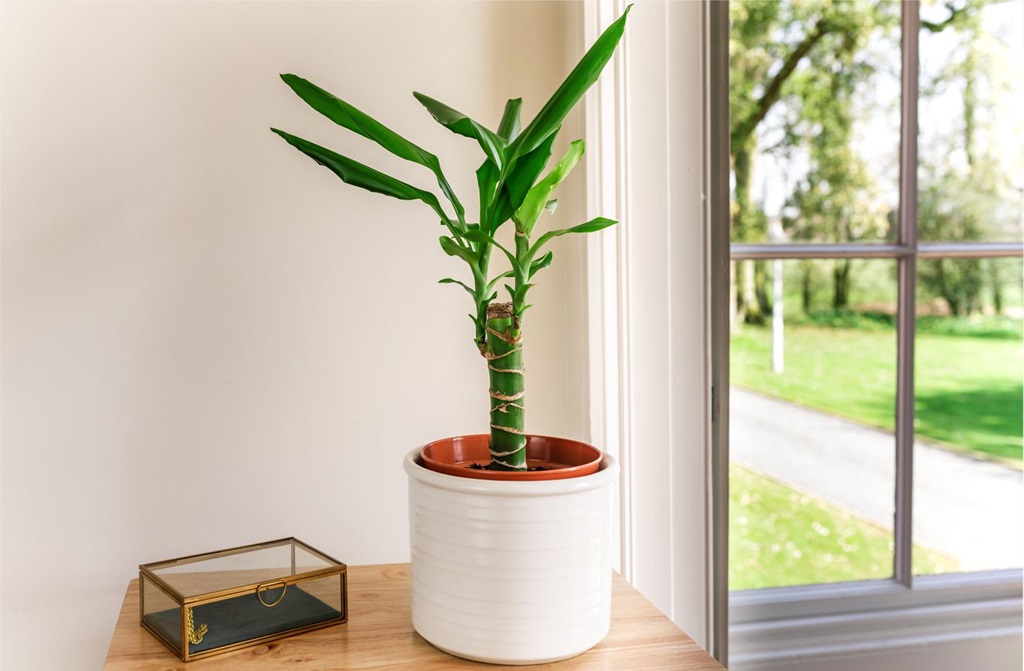
The corn plant is a prevalent dracaena variety with thick woody stems and arching straplike leaves. Corn plants grow slowly to around 6 feet tall indoors but can reach 10 feet over time. These tropical beauties are unfazed by low light and skimpy watering, making them an ideal choice for dim corners.
10. Lucky Bamboo (Dracaena sanderiana)
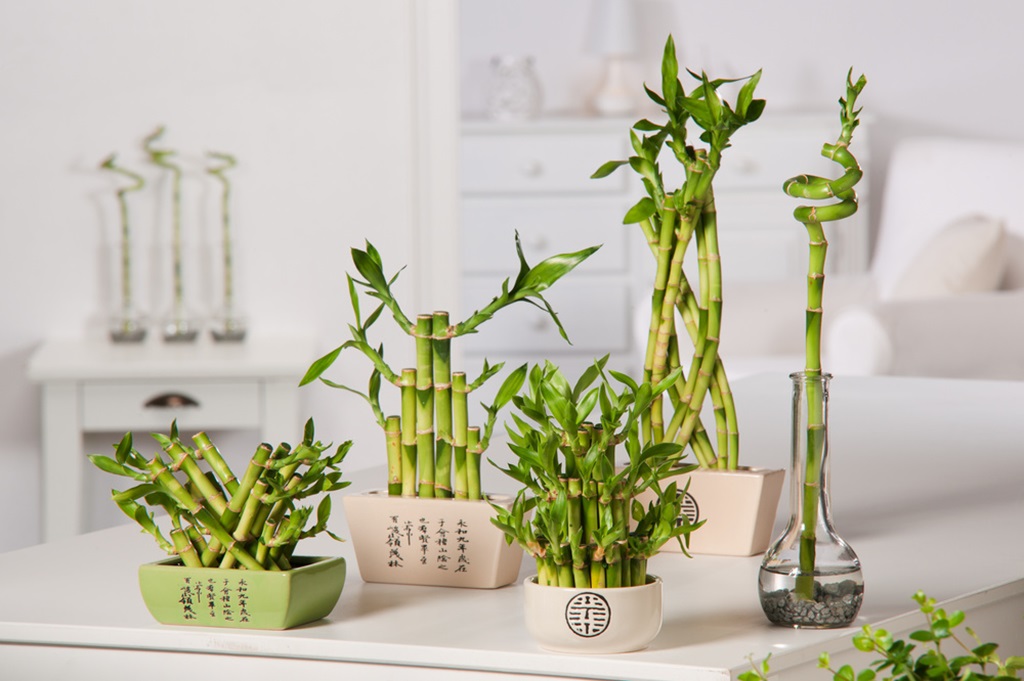
Despite its name, lucky bamboo isn’t a natural bamboo but another form of dracaena. You’ve probably seen these cute little plants growing in water-filled vases and containers. Luckily, bamboo will also grow in soil and tolerate the dark well. Choosing plants with yellow or twisted stems adds extra visual appeal, perfect for brightening shadowy areas.
11. Spider Plant (Chlorophytum comosum)

Don’t let the name scare you – spider plants are among the easiest indoor plants to grow. Their graceful, curling foliage makes a lovely accent, and the plants produce tiny white flowers on long stems that dangle like spiders. While they prefer bright light, spider plants adapt well to lower-light situations. Allow the soil to dry out some between watering.
12. Boston Fern (Nephrolepsis exaltata)
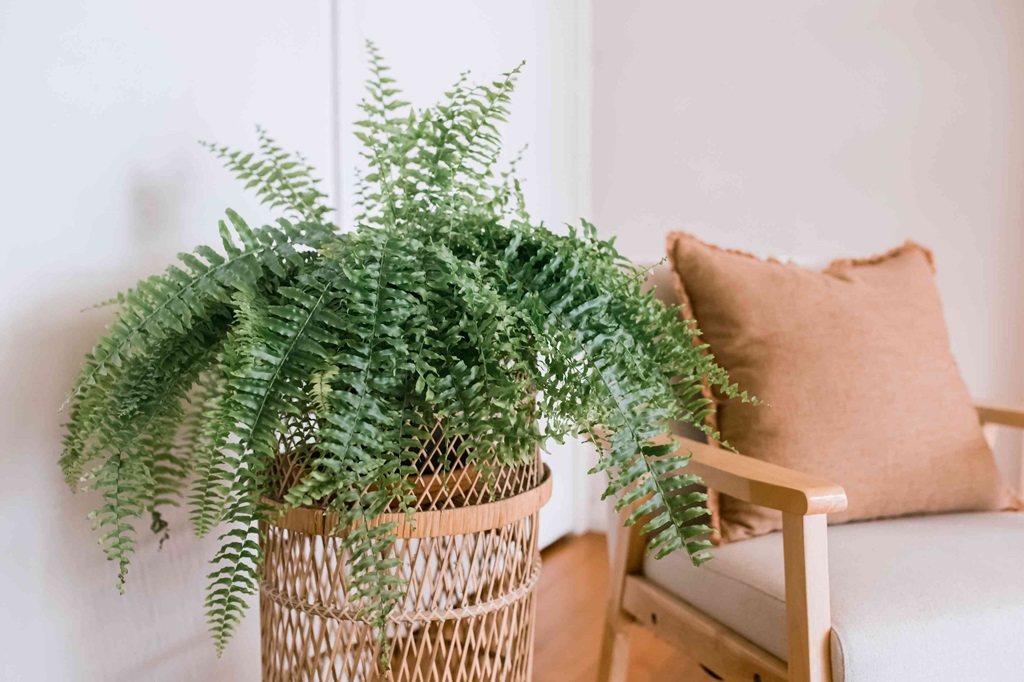
Ferns make beautiful indoor houseplants thanks to their delicate, lacy fronds. Boston ferns have long divided leaves that can reach several feet in length. Although they do best in humid conditions and moist soil, Boston ferns will tolerate low lighting very well. Keep their hanging roots moist by sitting pots on pebble trays. Their graceful drapery adds a softening effect.
13. Prayer Plant (Maranta leuconeura)

Named for its foliage that closes upward at night like praying hands, the prayer plant is an attractive low-light option. Native to Brazil, its oval-shaped, vividly marked leaves add a bold, tropical flourish. Water when the top inch of soil dries and mist regularly to boost humidity. Please give it a bit more light to encourage flowering.
14. Bird’s Nest Fern (Asplenium nidus)
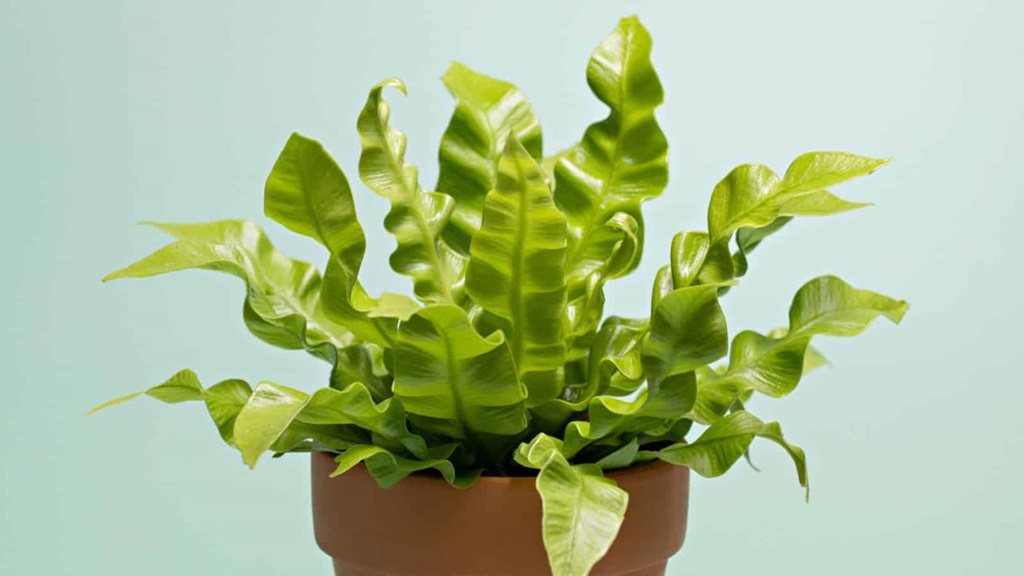
This aptly named fern has smooth, light green fronds that radiate from the center like a bird’s nest. Slow-growing and low maintenance, their nest-like structure works beautifully in hanging baskets. Bird’s nest ferns thrive in humid environments and filtered light, making them the perfect focal point in a bathroom or other dim, warm space.
15. Heartleaf Philodendron (Philodendron scandens)
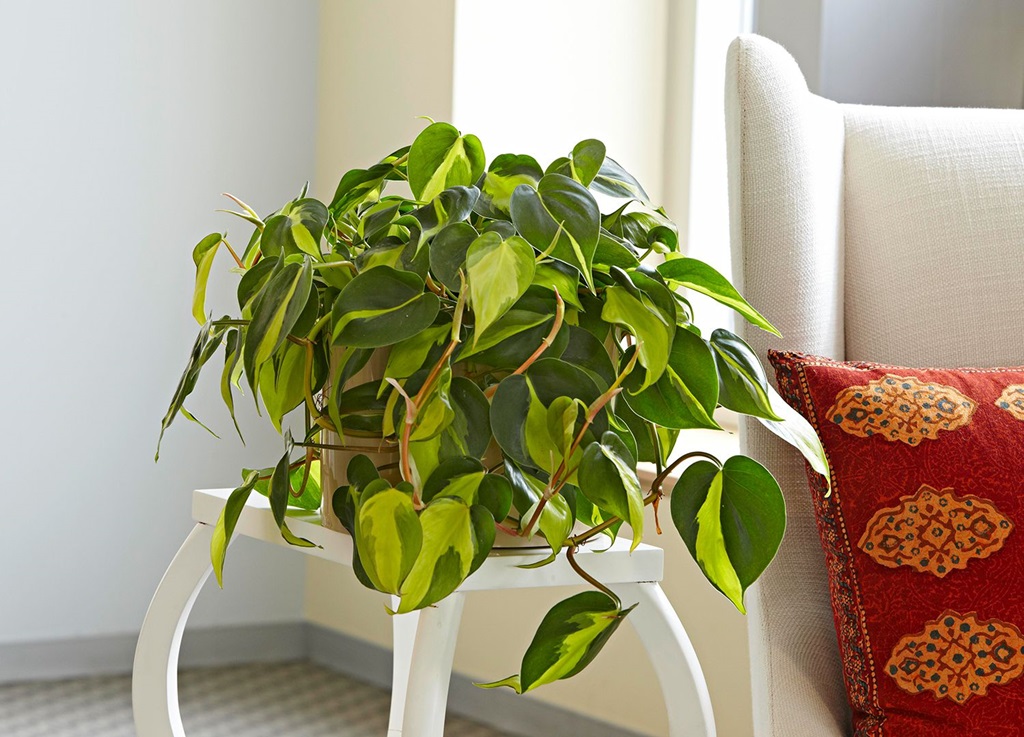
One of many popular philodendrons, the heartleaf variety is particularly well suited to low-light spots. Their small, heart-shaped leaves add a graceful drape to shelves and side tables. Allow the top inch of soil to dry out between waterings and mist regularly. Remove any yellowing leaves to keep it looking fresh.
16. Moth Orchid (Phalaenopsis)
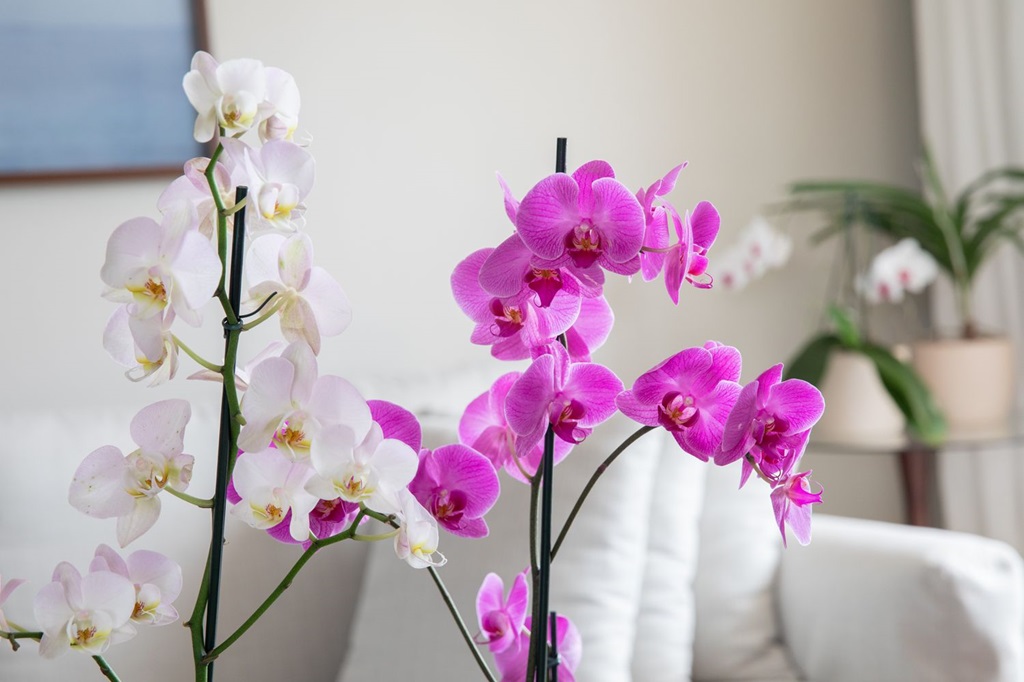
While most orchids demand very bright light, moth orchids are an exception. Their colorful, fragrant blooms last for months. They thrive in humid conditions with 12 to 16 hours of indirect light. Water when dry and weekly feeding will encourage reblooming. An east or west window provides ideal light for moth orchids.
17. Dieffenbachia (Dieffenbachia)
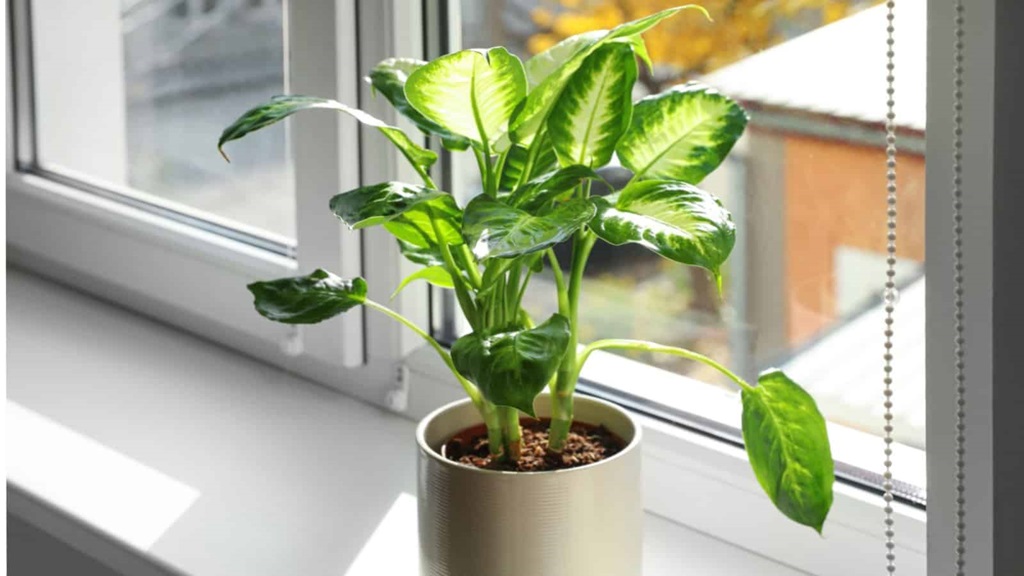
Dieffenbachia offers stunning tropical foliage in various patterns, from solid green to blotchy, striped, and splattered varieties. Reaching 2 to 5 feet tall, their stems are topped with large, colorful leaves. Dieffenbachia thrives in normal indoor conditions, even in relatively dim corners. Let the soil dry between watering and remove dead leaves promptly.
18. Aglaonema (Aglaonema)
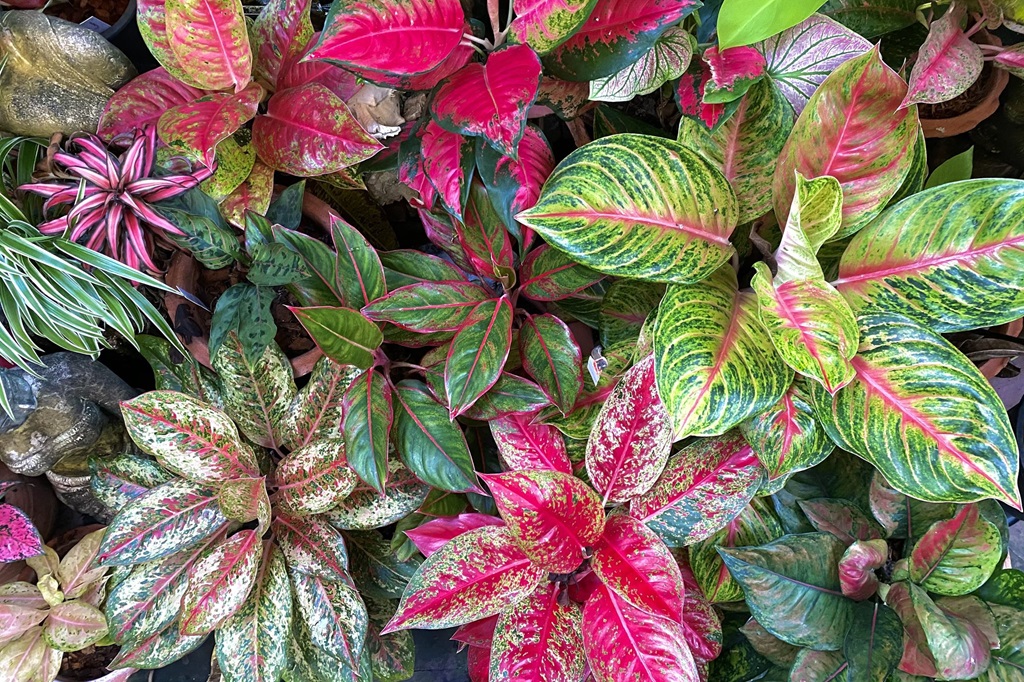
I already mentioned the colorful Chinese evergreen varieties above, but standard aglaonema deserves a spot on this list, too. With their oval-shaped, dark green leaves, aglaonema is a quintessential houseplant that can handle any indoor condition. Varieties like Emerald Beauty and Silver Queen add extra eye-catching appeal with their variegated foliage.
19. Peperomia (Peperomia)
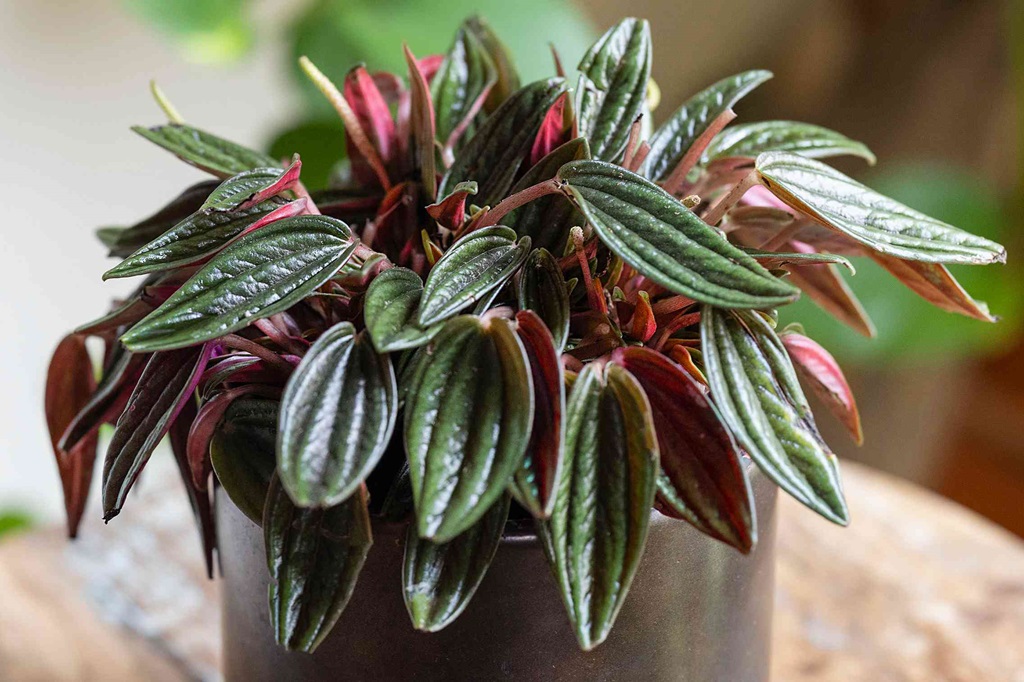
If you want a unique texture and compact size, you can’t go wrong with Peperomia! Their thick, waxy leaves come in various shapes and color combinations. Slow growing, they max out around 8-12 inches tall but spread into bushy little plants. Peperomia grows well in medium to low-light locations. Allow soil to dry between waterings.
20. Calathea (Calathea)
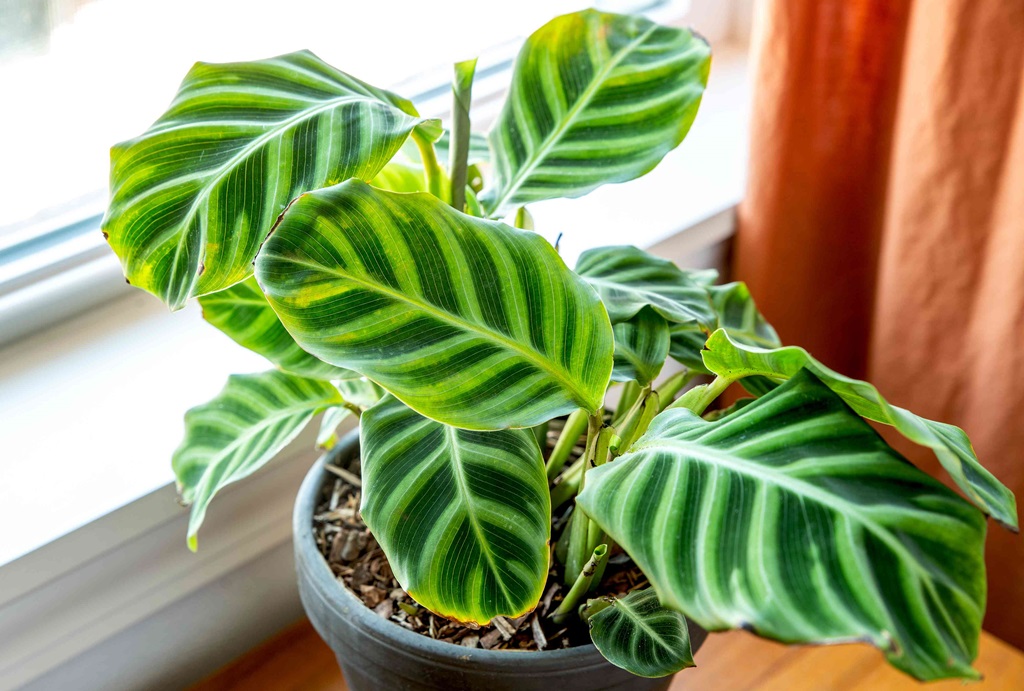
Last but not least is the calathea group of houseplants adored for their highly decorative leaves. Originating in the tropics, calathea features bold patterns and colors on oval leaves that move throughout the day. They do best in medium to low-light situations. Keep their soil consistently moist and provide regular humidity.
Caring For low-light houseplants
Now that you’re inspired to bring more plants into those darker rooms in your home let’s go over some general care tips to keep them thriving:
- Water less frequently – Plants in low light conditions don’t use water as quickly, so take care not to overwater. Allow soil to dry out more between waterings.
- Mist regularly – Increasing humidity around the plants will prevent dry, crispy leaf tips in low-light situations. Misting 2-3 times a week is very beneficial.
- Remove dead leaves – Check plants regularly for any dead or yellowing leaves. Prune these away to keep the plants looking their best.
- Turn plants – Rotate plants occasionally so all sides get equal light exposure and even growth.
- Clean leaves – Use a damp cloth to gently wipe dust off the leaves every few weeks to maximize light absorption.
- Fertilize sparingly – During the growing season, fertilize monthly, using 1/2 the recommended strength since growth is slower.
Follow these tips and the plants highlighted above to create your indoor oasis, even in the darkest corners of your home. A few great plants can liven up any dim space!
Conclusion
Don’t let a lack of bright sun prevent you from enjoying beautiful indoor plants! As you can see, many attractive houseplant varieties perfectly adapted to lower light conditions exist.
When shopping for plants, look for species with traits like large, light-colored leaves and slow growth rates that allow them to thrive in the shade. Proper watering, humidity, and occasional pruning will keep them healthy and vibrant even in dim interiors.
You are no longer compromising on houseplants to brighten up your darker rooms. With this guide to the best indoor plants for dark room picks, anyone can cultivate an indoor oasis with greenery in any space!
Common Questions
Question: How many hours of light do low-light plants need daily?
Answer: Most low-light houseplants only require 4-6 hours of indirect sunlight or fluorescent lighting daily. Some very adaptable varieties will get by on as little as 2-3 hours daily.
Question: Can I grow low-light plants in rooms with no windows?
Answer: Yes! Many basement rooms, offices, bathrooms, and other windowless spaces can support plants using fluorescent lights. Place the plants within 2-3 feet of standard fluorescent tube bulbs for adequate light.
Question: Should I use grow lights for my low-light plants?
Answer: Grow lights are not necessary but can be beneficial as a supplement to increase brightness, especially in winter when days are shorter. LED or full spectrum grow lights are ideal, positioned 12-18 inches above the plants for 10-12 hours daily.
Question: How often should I water plants in low light conditions?
Answer: The low rate of growth and transpiration in low light means plants need less frequent watering. Wait until the top 1-2 inches of soil have dried out before watering again. This can mean watering every 2-3 weeks, depending on humidity and temperature.
Question: Can I prune and propagate plants in low-light conditions?
Answer: Yes, pruning and propagation are still possible in low light. Cuttings may root a bit more slowly but will still be successful. Prune back leggy growth and remove dead leaves to encourage plants to refocus their energy.




